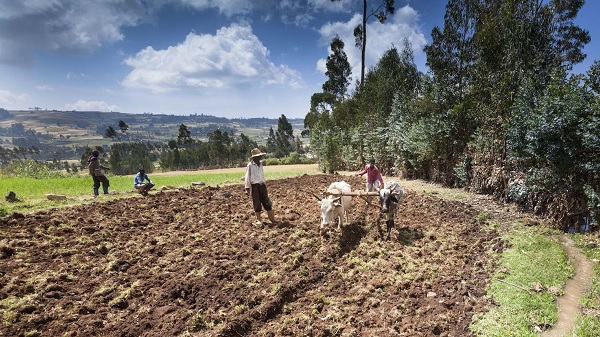
The EthioSIS Project was launched in 2012 to transform the agriculture sector by improving the fertility of farming soil to support agricultural transformation.
ADDIS ABABA (ENA)–The Agricultural Transformation Agency (ATA) announced that it is preparing a national soil map that will be completed in the coming six months.
“We are preparing a National Soil Map which will be completed and published in the coming six months; and this map will have clear recommendations on the amount and kind of fertilizer that the country should use for specific soil,” Ethiopian Soil Information System (EthioSIS) Project Team Leader Ato Tegbaru Belete said.
The EthioSIS Project was launched in 2012 to transform the agriculture sector by improving the fertility of farming soil to support agricultural transformation.
EthioSIS has been supporting agriculture by developing soil fertility maps for more than 18,000 rural kebeles in the country and providing up-to-date soil fertility data as well as recommending the best type of fertilizer for soil in each region, Ato Tegbaru said.
In this regard, ATA has already completed soil sampling and fertilizer recommendations for Amhara, Harari, Tigray, and Southern, Nations Nationalities and Peoples Regional States as well as Dire Dawa City Administration. Soil map for Oromia Regional State is under preparation, it was learned.
Meanwhile, soil fertility surveying and sample gathering is completed in Benishangul-Gumuz and Gambella Regional States, and soil map for those regions will be completed soon, the team leader said, adding that the Agency is conducting soil surveying for Afar and Somali Regional State.
According to Ato Tegbaru, preparing soil map for a specific region is very important to support agricultural productivity by identifying and recommending specific fertilizer for specific farming place.
He noted that the agriculture sector in Ethiopia is facing serious challenges due to long standing practice in Ethiopia that the same kind of fertilizer should uniformly be used across varied soil types.
“We were using only two kinds of fertilizers, Urea and DAP, that consisted nitrogen and phosphorous substances which are not recommended for all types of soil and it is challenging our agricultural productivity,” he explained.
Ato Tegbaru insisted that this belief must be changed as Ethiopia has a variety of soils that have different soil acidity, salinity and other damaging problems that require a variety of fertilizers.
The team leader stated that the soil sampling work currently recommends at least 12 types of fertilizers to address nutrient deficiencies of soil throughout the country.
“We have tested five types of fertilizers as a pilot project in over 40,000 private holdings and large public farms; and these have proved successful,” he added.
The agency and Ministry of Agriculture and Fisheries will distribute the fertilizers for farmers as they are registering good results.
Public Relations Director at Ministry of Agriculture and Fisheries, Ato Alemayehu Berhanu said the ministry is also finalizing a study that will identify the critical challenges the country is facing in the process of preparing fortified fertilizers.
Ato Alemayehu stated that the ministry is expecting the new soil map and the fertilizer study will increase agriculture production and productivity in the coming years.
“There are also some technical problems in our fertilizer blending factories so we are expecting that our study will answer those problems and increase productivity”, he added.
Ethiopia has purchased 1.3 million metric tons of fertilizer to harvest 13 million hectares of land in 2018/2019 fiscal year.
Source: ENA
